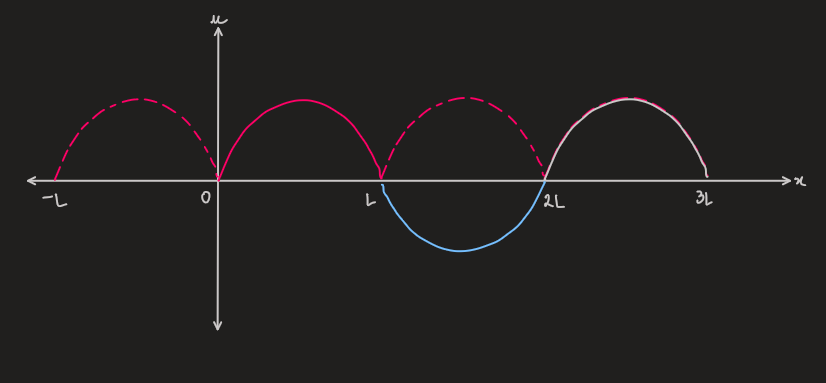PX275 - G6 - boundary and initial conditions
initial conditions
- the value of the solution at time,
, or its derivative - eg: initial shape and/or velocity
boundary conditions
-
physics problems usually directly look at finite domain
-
dirichlet boundary conditions: values solutions take along boundaries; eg:
-
neumann boundary conditions: values of derivatives at boundaries; eg: string clamped at both ends
-
previously:
- defining a coordinate frame where the constants of integration vanish
- eg: aligning the string with the
-axis,
- taking the boundary condition of string clamped at both ends:
- for this to be true,
, where - the solution now reduces to a fourier series:
where,
recap on fourier series
- any function,
, periodic over an interval, , can be described by a fourier series:
- the average value of the function:
-
if only interested in the value of the function over a finite domain
, it can be periodically extended

-
fourier series can thus be used to described non-periodic functions
-
any solution over a finite domain, eg:
, can be periodically extended outside of this domain, and thus, a fourier series a a full description of this solution -
here, the boundary conditions directly demanded
, but the solution can always be written as a fourier series -
defining two independent constants:

-
the lowest
corresponds to the longest wavelength and the smallest wavenumber, -
initial conditions can describe:
- the shape of the string at
- the string is released at
, ie. fully at rest at
- the shape of the string at